Finespotted Jawfish, Opistognathus punctatus
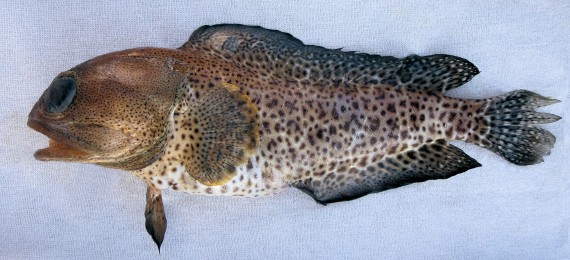
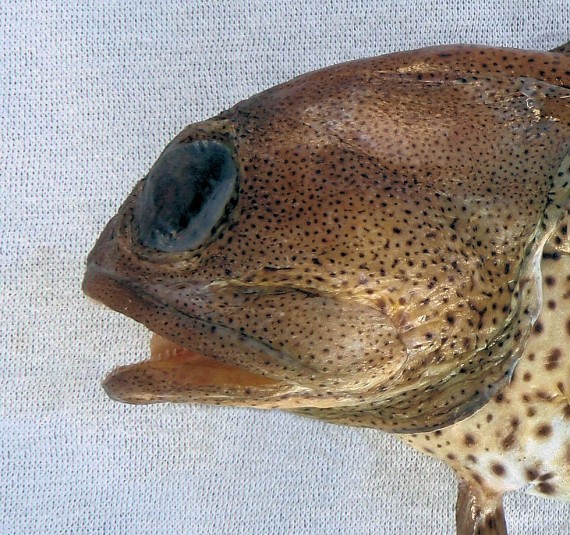
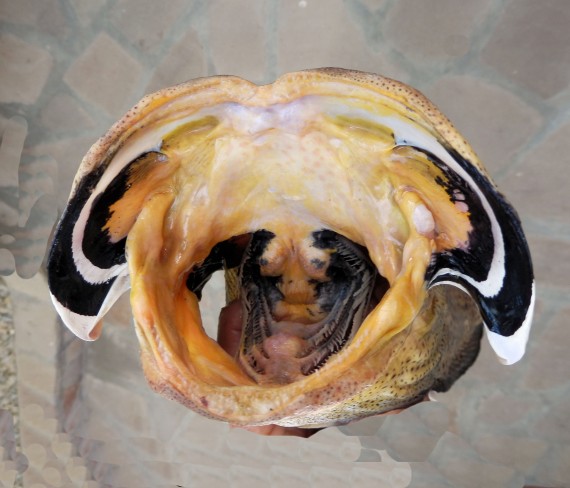 Finespotted Jawfish, Opistognathus punctatus. Fish provided by the commercial fishermen of the greater Los Cabos area, Baja California Sur, April 2009. Length: 28 cm (11 inches).
Finespotted Jawfish, Opistognathus punctatus. Fish provided by the commercial fishermen of the greater Los Cabos area, Baja California Sur, April 2009. Length: 28 cm (11 inches).
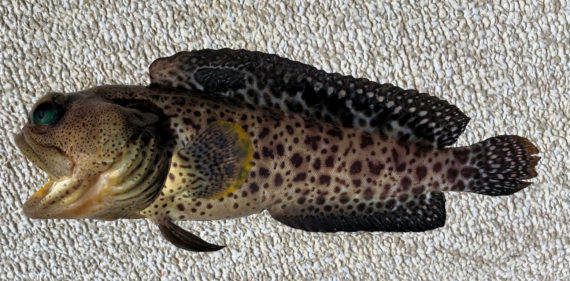 Finespotted Jawfish, Opistognathus punctatus. Fish caught from coastal waters within Magdalena Bay, Baja California Sur, February 2018. Length: 23 cm (9.2 inches). Catch, photograph and identification courtesy of Brad Murakami, Surrey, British Columbia, Canada. Note the interesting large ocellus spot on the front of the dorsal fin.
Finespotted Jawfish, Opistognathus punctatus. Fish caught from coastal waters within Magdalena Bay, Baja California Sur, February 2018. Length: 23 cm (9.2 inches). Catch, photograph and identification courtesy of Brad Murakami, Surrey, British Columbia, Canada. Note the interesting large ocellus spot on the front of the dorsal fin.
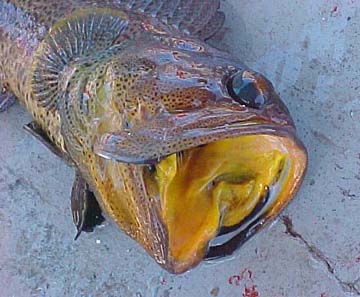 Finespotted Jawfish, Opistognathus punctatus. Fish caught from coastal waters off Bahia de los Angeles, Baja California, April 2006. Fish has unusual yellow pigmentation inside mouth, normally light tan. Catch and photograph courtesy Gene Kira, Valley Center, California.
Finespotted Jawfish, Opistognathus punctatus. Fish caught from coastal waters off Bahia de los Angeles, Baja California, April 2006. Fish has unusual yellow pigmentation inside mouth, normally light tan. Catch and photograph courtesy Gene Kira, Valley Center, California.
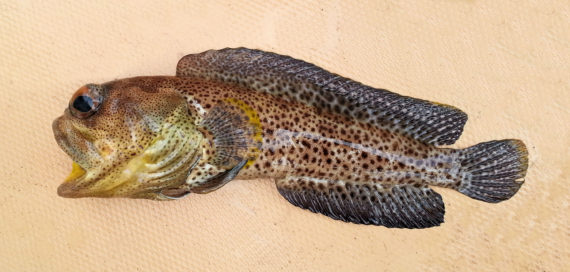 Finespotted Jawfish, Opistognathus punctatus. Fish caught from coastal waters off Loreto, Baja California Sur, March 2014. Catch, photograph and identification courtesy of Chris Wheaton, Fullerton, California.
Finespotted Jawfish, Opistognathus punctatus. Fish caught from coastal waters off Loreto, Baja California Sur, March 2014. Catch, photograph and identification courtesy of Chris Wheaton, Fullerton, California.
The Finespotted Jawfish, Opistognathus punctatus, is a member of the Jawfish or Opistognathidae Family, and is known in Mexico as bocón punteado. Globally, there are forty-three species in the genus Opistognathus, thirteen of which are found in Mexican waters, six in the Atlantic and seven in the Pacific Ocean.
The Finespotted Jawfish has a moderately elongated and tapering body. They are light gray or brownish in color with numerous fine dark spots covering their entire body. These spots increase in number as the fish matures. There are also large black blotches on their sides and fins. Males have two black “V”-shaped marks inside their lower jaw. Their pectoral fins are orange tipped. Their head is enlarged and bulbous. They have a large mouth that extends past their eyes and is equipped with moderately-sized canine-like teeth along the sides of their jaws; the interior of their mouth is a bright yellow-orange color. Their eyes are large and found high on the head. Their anal fin has 2 spines and 16 or 17 rays; their caudal fin is short and rounded; their dorsal fin has 2 spines and 16 or 17 rays; their pectoral fins are large with 20 or 21 rays; and, their pelvic fins are found anteriorly of the pectoral fins and have 1 spine and 5 segmented rays. Their body is covered with smooth scales. Their lateral line is high on the body and ends under the middle of the dorsal fin.
The Finespotted Jawfish resides in shallow coastal waters on sandy or rubble substrate adjacent to coral or rocky reefs at depths up to 24 m (80 feet). They reach a maximum of 41 cm (16 inches) in length. As of January 1, 2024, the International Game Fish Association world record stood at 1.13 kg (2.5 lb) with the fish caught from coastal waters off Sonora in June 1988. They live in elaborate burrows that are self-constructed and utilize their mouths and powerful jaws to excavate sand, small stones, and medium-sized rocks. Their burrows are frequently lined and reinforced with pebbles and shell fragments. They are generally found in colonies and feed primarily on benthic and planktonic invertebrates. They exhibit the unusual habit of oral egg incubation. They can be found in water with temperatures as high as 35oC (95oF). The Finespotted Jawfish is poorly studied with very limited information available about their lifestyle and behavioral patterns including specific details on age, growth, longevity, movement patterns, diet, habitat use, and reproduction.
The Finespotted Jawfish is a resident Mexican waters of the Pacific Ocean but has a limited range being found from Magdalena Bay, Baja California Sur, southward along the southwest coast of Baja, throughout the Sea of Cortez, and along the coast of the mainland south to Guatemala.
The Finespotted Jawfish can be confused with the Giant Jawfish, Opistognathus rhomaleus (large spots on head, mid-sized eyes, tan color inside the mouth, no spots on the fins and body).
From a conservation perspective the Finespotted Jawfish has not been formally evaluated but is believed to have stable populations with a wide distribution. They are of limited value to humans and normally considered a “catch and release” except that they are retained by to subsistence fishermen.